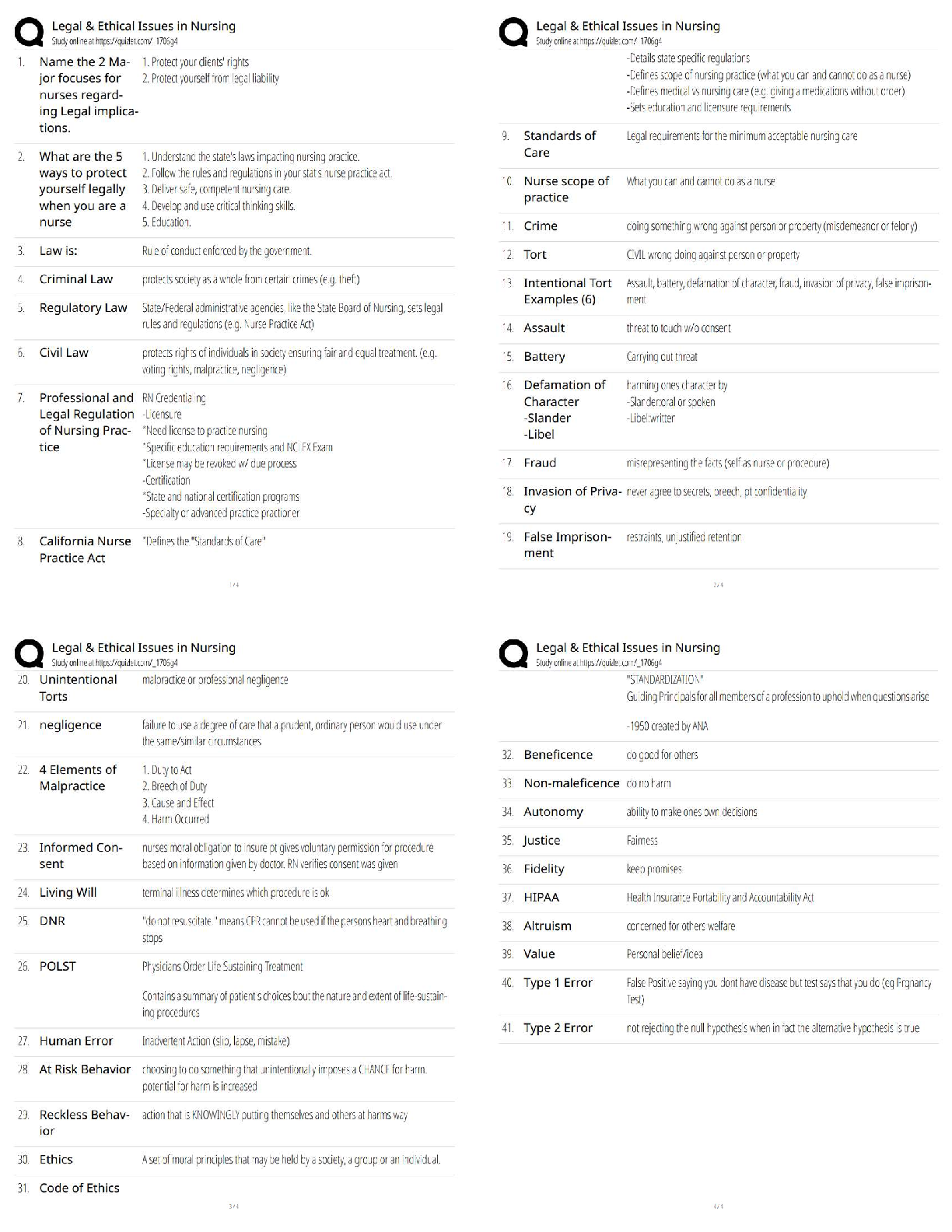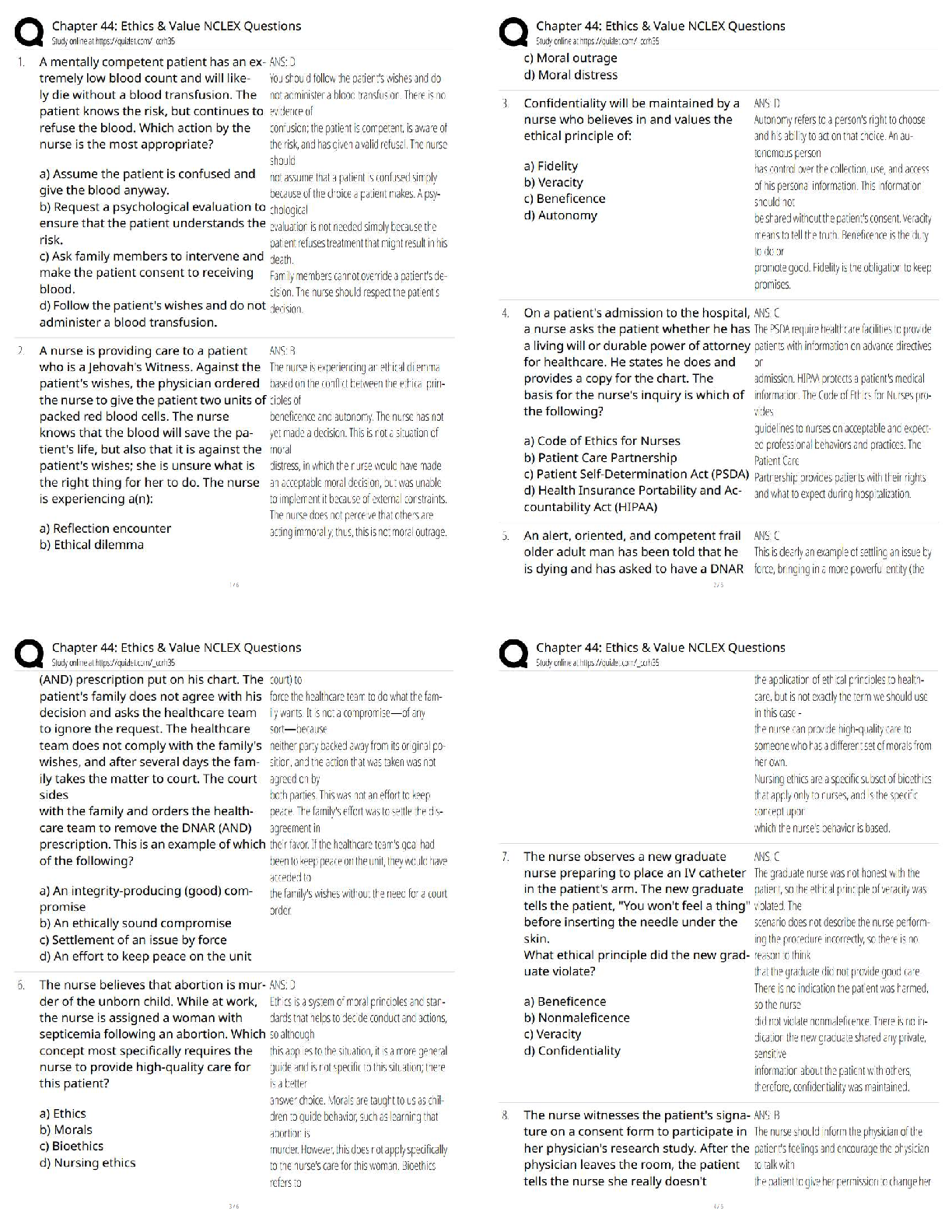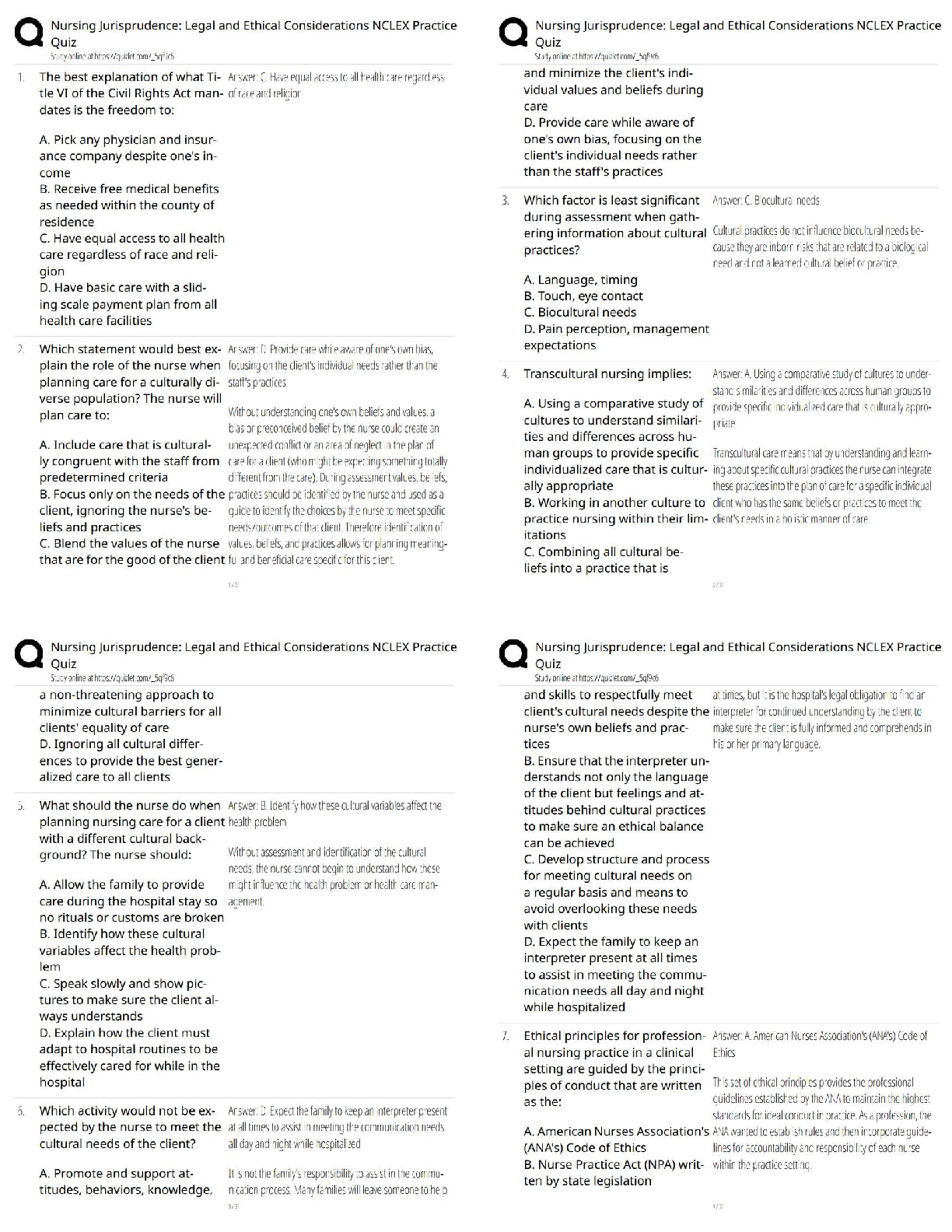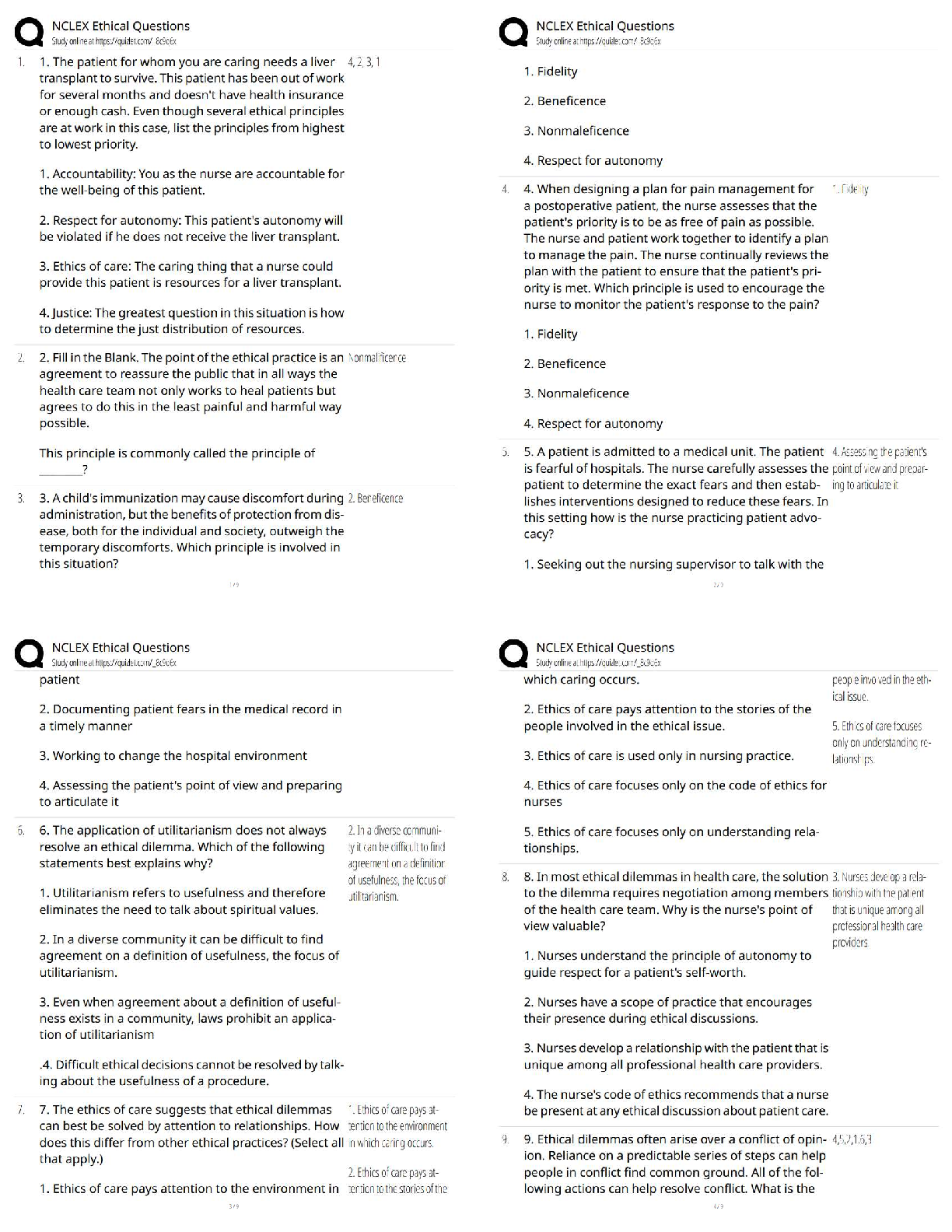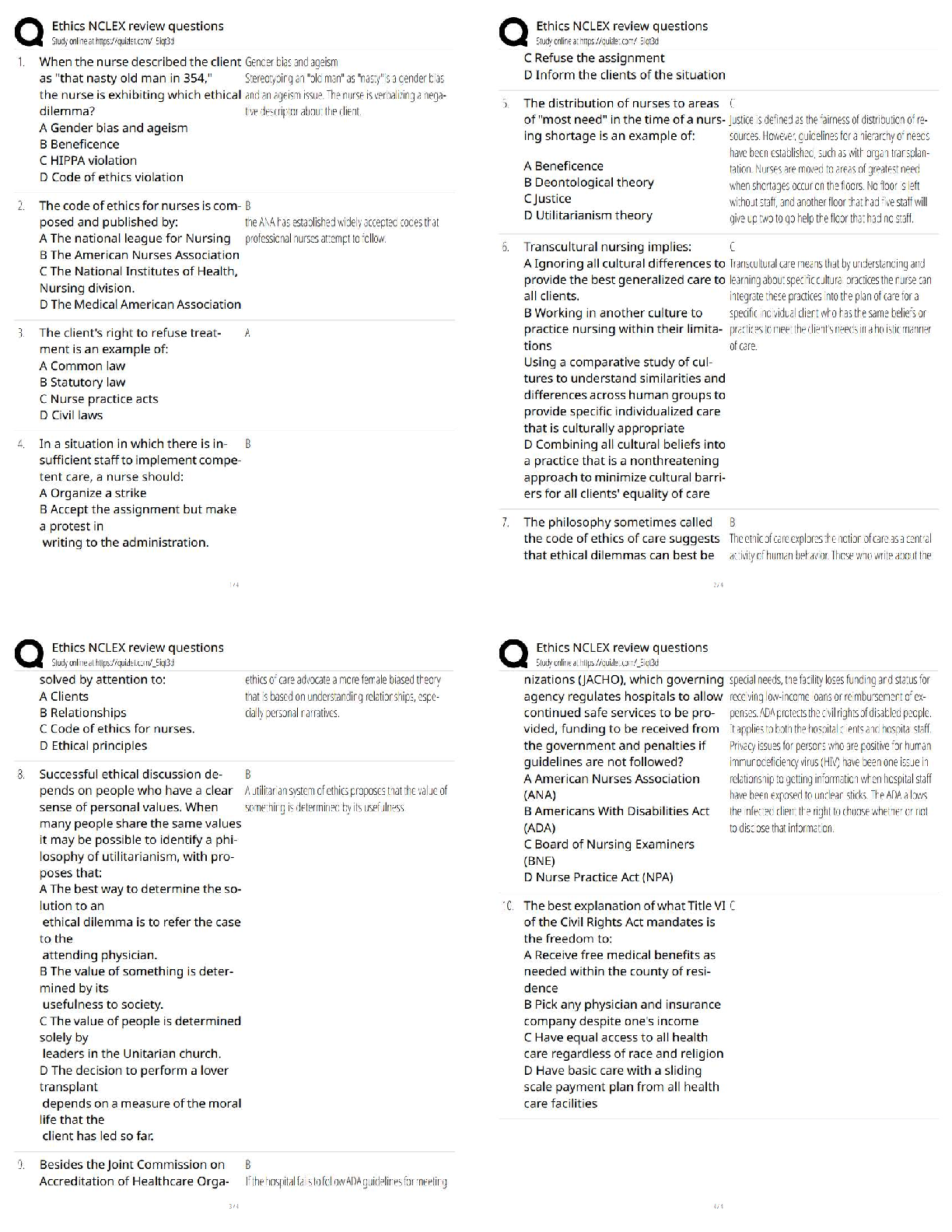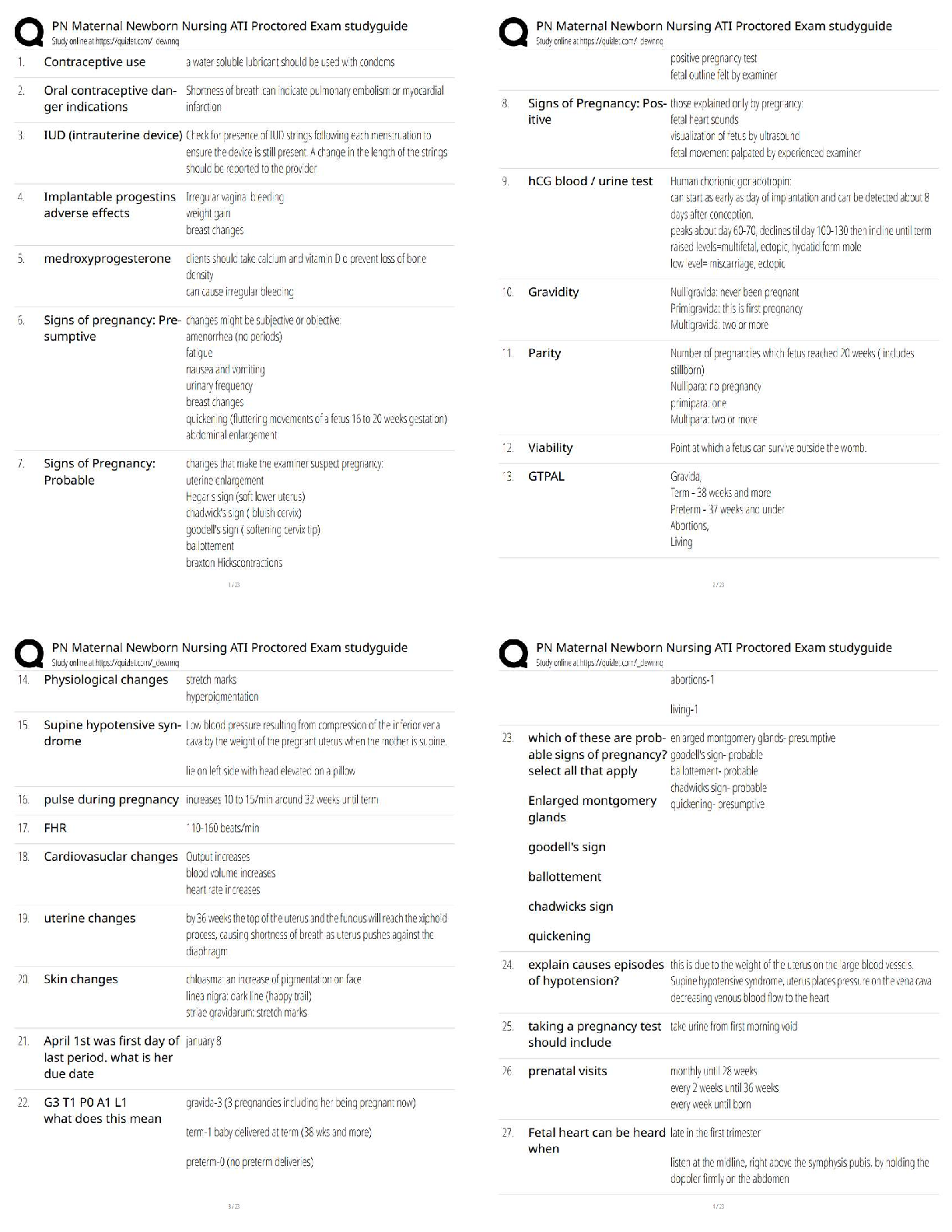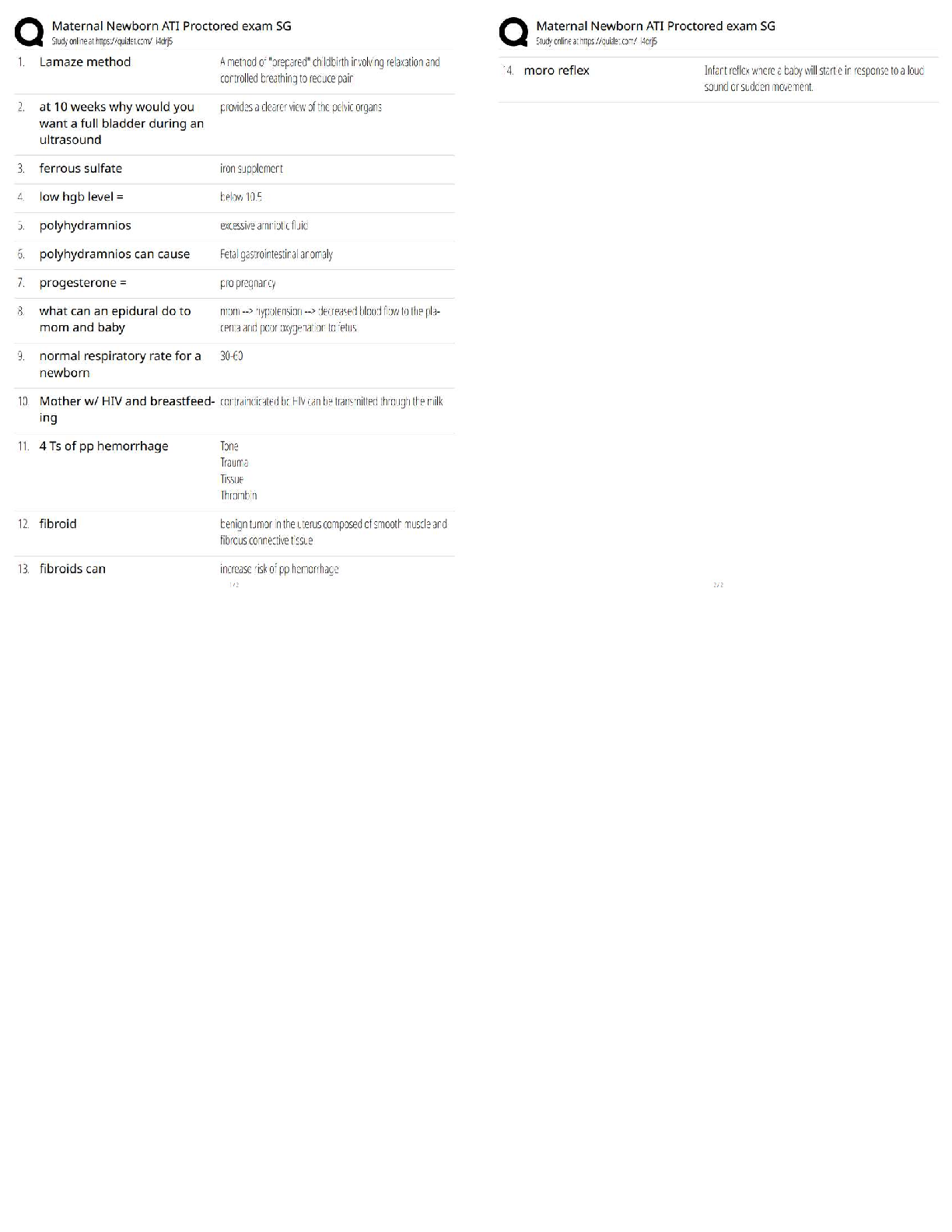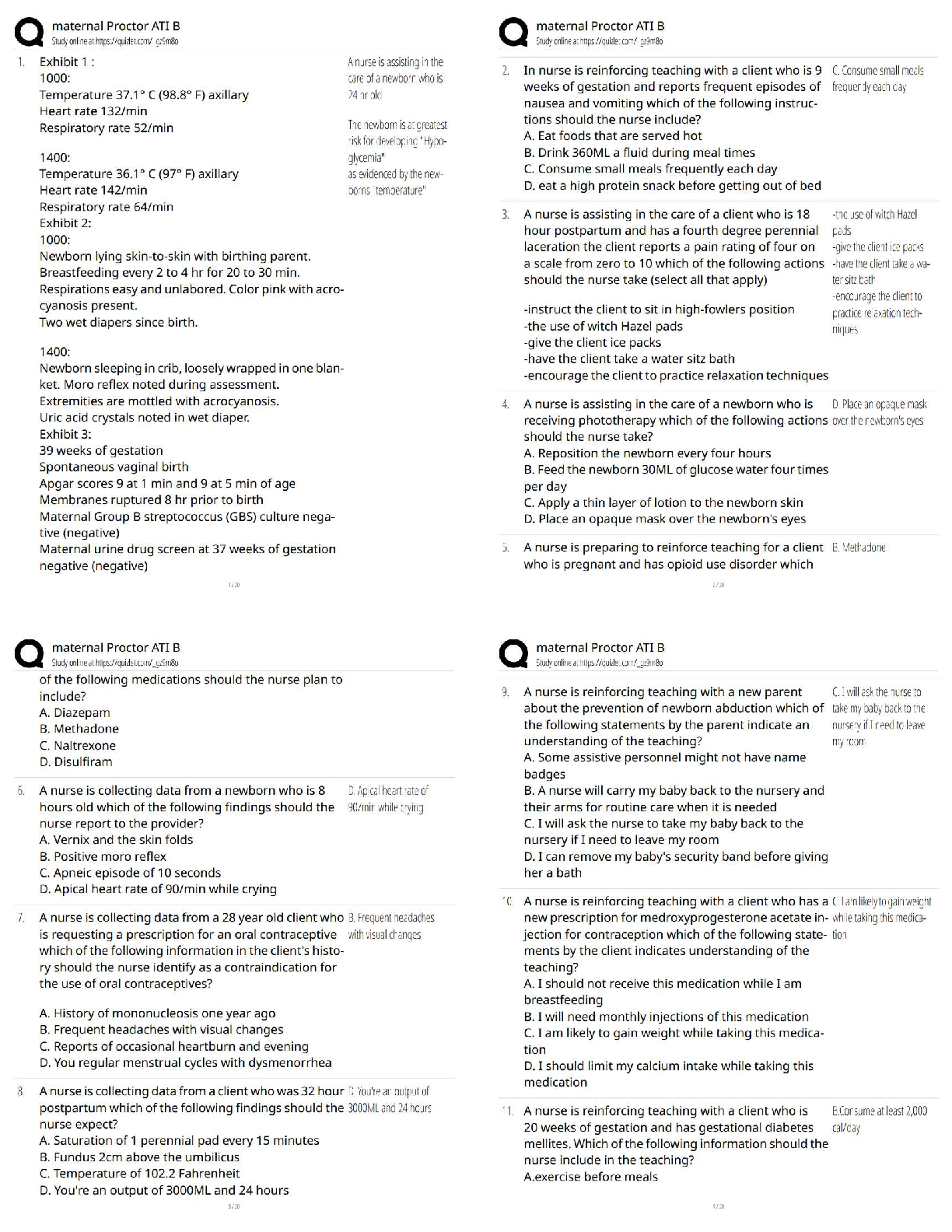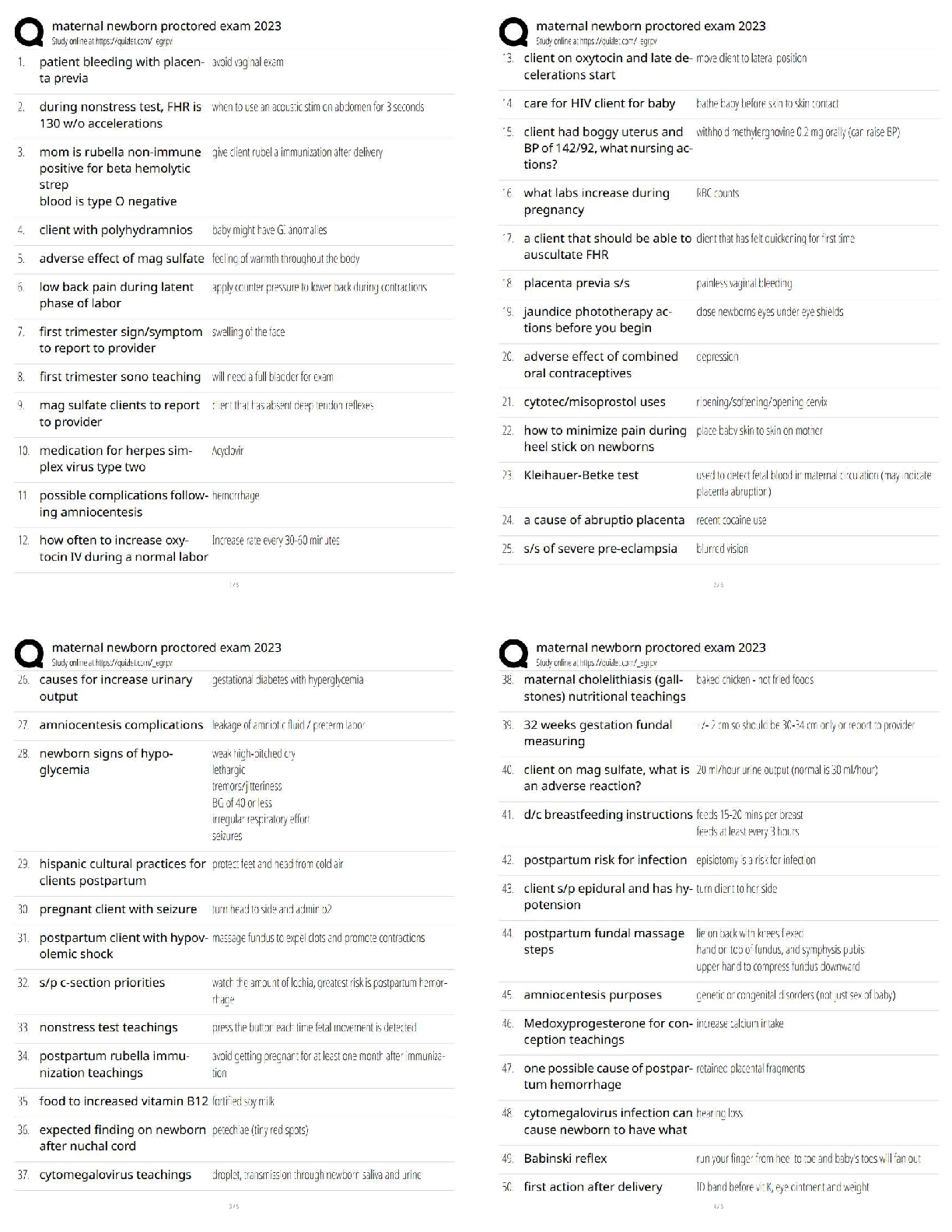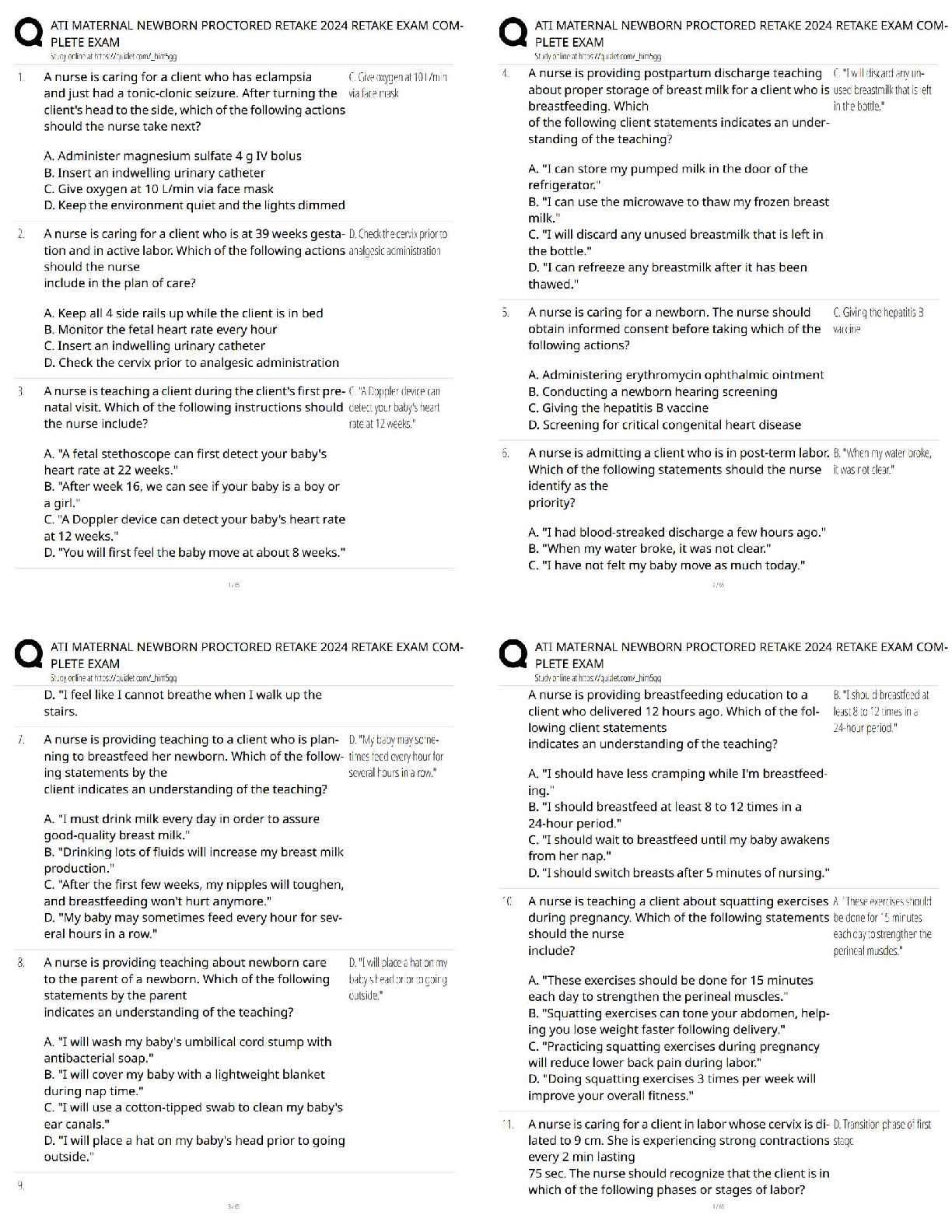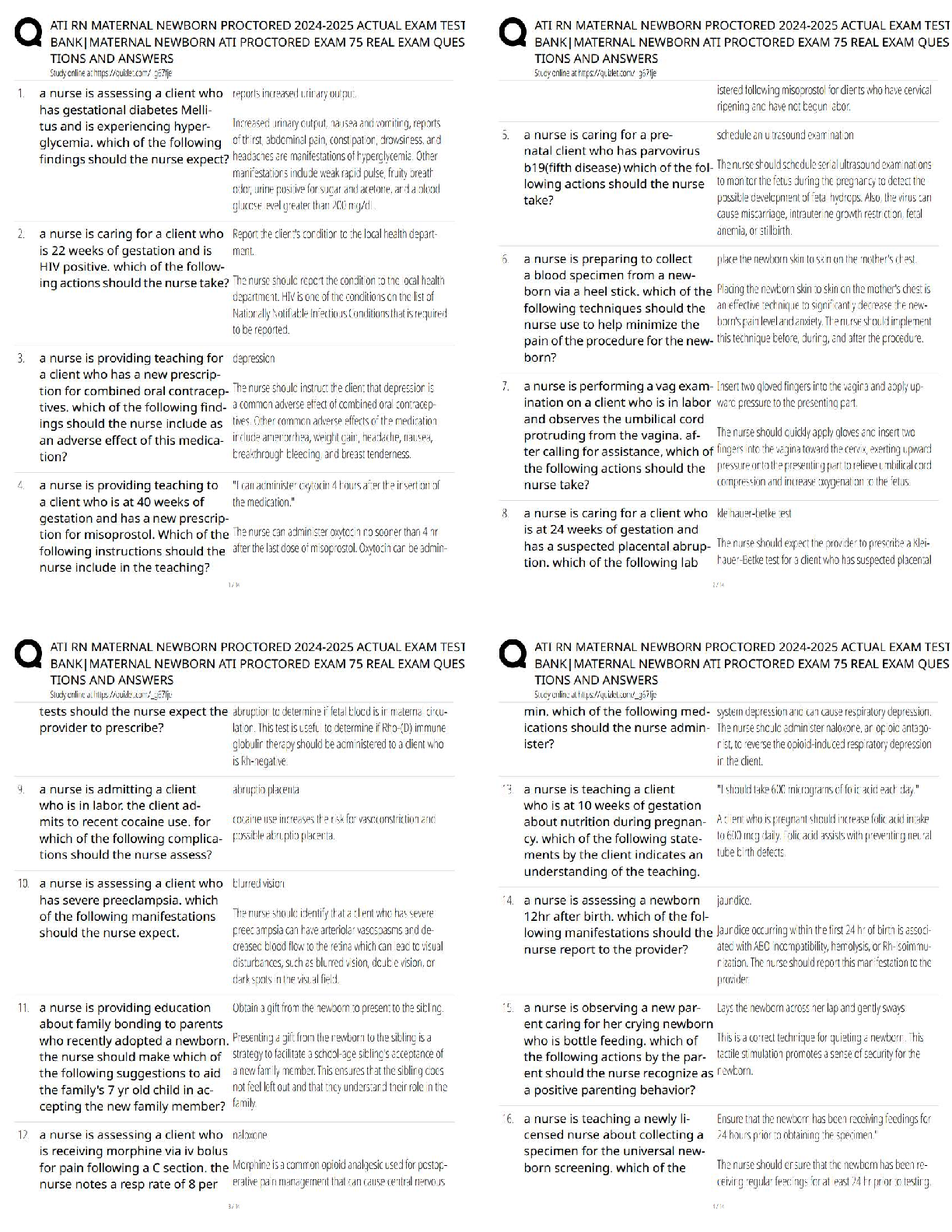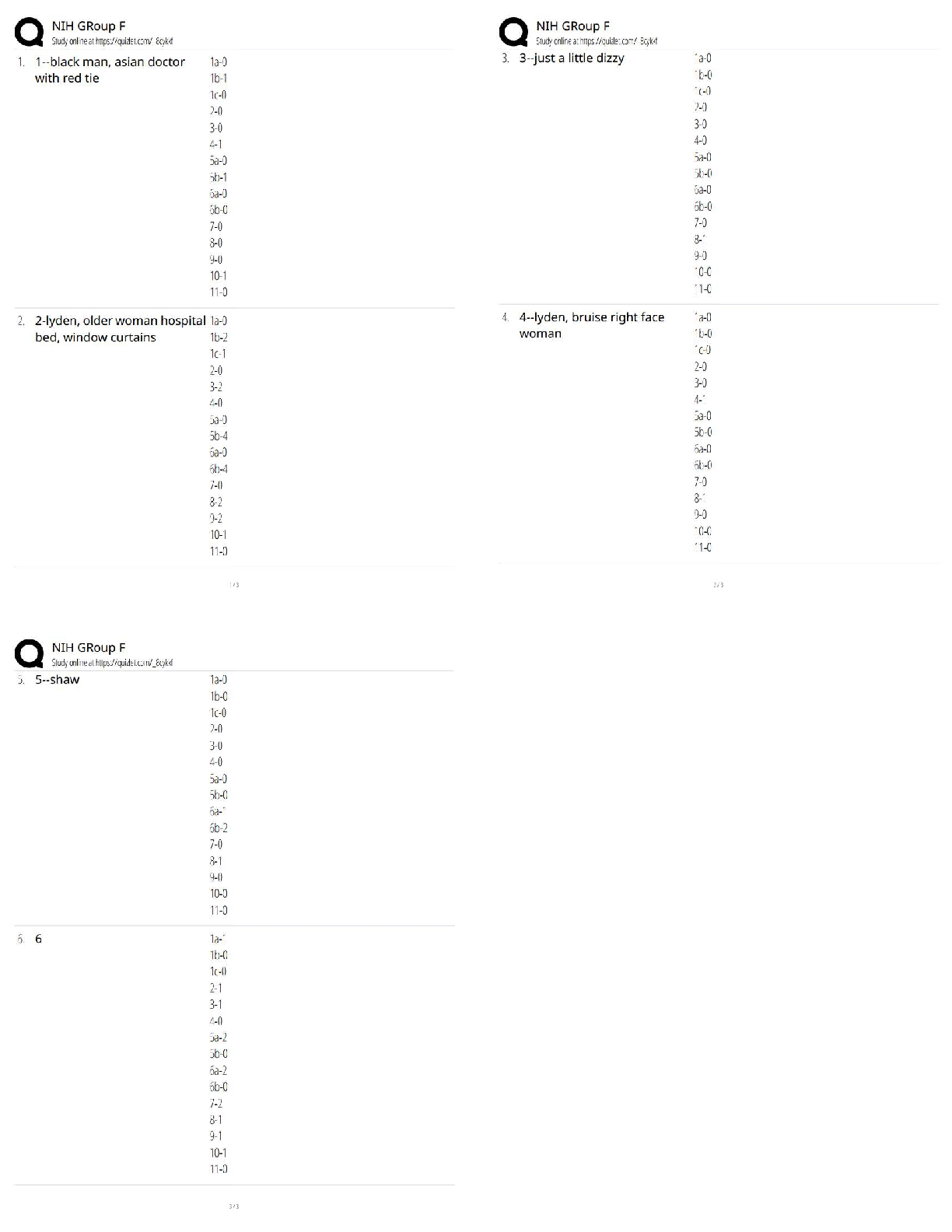Leadership > QUESTIONS & ANSWERS > NUR 6501 Week 5 Quiz Advanced Patho- preparation question and answers solution (All)
NUR 6501 Week 5 Quiz Advanced Patho- preparation question and answers solution
Document Content and Description Below
NUR 6501 Week 5 Quiz Advanced Patho- preparation question and answers solution Question 1 0 out of 0 points When completing this quiz, did you comply with Walden University’s Code of Conduct ... including the expectations for academic integrity? • Question 2 1 out of 1 points A 51-year-old male presents with recurrent chest pain on exertion. He is diagnosed with angina pectoris. When he asks what causes the pain, how should the nurse respond? The pain occurs when: • Question 3 1 out of 1 points A 1-month-old infant was diagnosed with truncus arteriosus (TA) with a ventricular septal defect. Which of the following would the nurse also expect? • Question 4 1 out of 1 points A 28-year-old female presents to the ER reporting severe chest pain that worsens with respirations or lying down. She has a fever, tachycardia, and a friction rub. Based upon the assessment findings, the nurse determines the patient is experiencing: • Question 5 1 out of 1 points A 27-year-old male is admitted to a neurologic unit with a complete C-5 spinal cord transection. On initial assessment, he is bradycardic, hypotensive, and hyperventilating. He appears to be going into shock. The most likely mechanism of his shock is: • Question 6 1 out of 1 points A nurse is teaching a patient about anaphylactic shock. Which information should the nurse include? The onset of anaphylactic shock is usually: • Question 7 0 out of 1 points A 60-year-old female was diagnosed with mitral stenosis. As a result, the nurse realizes the patient has incomplete emptying of the: • Question 8 1 out of 1 points A 60-year-old female had a myocardial infarction. She was brought to the hospital 30 minutes later. She survived, but now the nurse is providing care for impaired ventricular function because: • Question 9 1 out of 1 points A newborn baby is severely cyanotic. An echocardiogram reveals transposition of the great arteries. A nurse assesses for which of the following, as it usually occurs with this defect? • Question 10 1 out of 1 points A 75-year-old obese female presents to her primary care provider reporting edema in the lower extremities. Physical exam reveals that she has varicose veins. Upon performing the history, which of the following is a possible cause for the varicose veins? • Question 11 1 out of 1 points A nurse recalls the most common cardiac valve disease in the United States, which tends to be most prevalent in young women, is: • Question 12 1 out of 1 points A newborn is suspected of having coarctation of the aorta. Which of the following assessments would aid in diagnosis? • Question 13 1 out of 1 points An infant undergoes an echocardiogram for a suspected heart defect. Tests reveal an opening in the middle of the atrial septum. What term would the nurse use to describe this defect? • Question 14 1 out of 1 points A 1-month-old infant visits his primary care provider for a well-baby check. Physical exam reveals decreased cardiac output, hypotension, tachycardia, and a loud murmur suggestive of aortic stenosis. Which of the following would be expected with this diagnosis? • Question 15 1 out of 1 points Upon assessment of the patient, the nurse finds a widened pulse pressure and throbbing peripheral pulses. Which valve disorder does the nurse suspect? • Question 16 1 out of 1 points A 10-year-old male presents with fever, lymphadenopathy, arthralgia, and nose bleeds. He is diagnosed with rheumatic heart disease. While planning care, which characteristic changes should the nurse remember? • Question 17 1 out of 1 points A 2-week-old infant presents with poor feeding, fatigue, dyspnea, and a murmur. She is diagnosed with a patent ductus arteriosus (PDA). A nurse recalls this condition results in a(n): • Question 18 1 out of 1 points A newborn is diagnosed with congenital heart disease. Which of the following intrauterine factors should the nurse focus on during the history that could have caused this disorder? • Question 19 1 out of 1 points A 50-year-old male was admitted to the intensive care unit with a diagnosis of acute myocardial infarction (MI). He is being treated for shock. His cardiopulmonary symptoms include low blood pressure, tachycardia, and tachypnea. His skin is pale and cool. The primary cause of his shock is most likely: • Question 20 1 out of 1 points A nurse is planning care for a patient in shock. Which principle should the nurse remember? During shock states, glucose uptake is usually: • Question 21 1 out of 1 points A 15-year-old male who is allergic to peanuts eats a peanut butter cup. He then goes into anaphylactic shock. Which assessment findings will the nurse assess for? • Question 22 1 out of 1 points A 3-year-old male is diagnosed with Kawasaki disease. Which of the following does the nurse suspect is the most likely cause? • Question 23 1 out of 1 points One consequence of switching from aerobic to anaerobic cellular metabolism during shock states is: • Question 24 1 out of 1 points A nurse is teaching staff about endocarditis. Which information should the nurse include? Inflammatory cells have difficulty limiting the colonization of microorganisms in infective endocarditis because the: • Question 25 1 out of 1 points A 20-year-old male underwent an echocardiogram to assess chest pain. Results revealed a congenital defect in papillary muscles. Which of the following would the nurse expect to occur? • Question 26 1 out of 1 points A 72-year-old female has a history of hypertension and atherosclerosis. An echocardiogram reveals backflow of blood into the left ventricle. Which of the following is the most likely diagnosis documented on the chart? • Question 27 1 out of 1 points A 55-year-old male died of a myocardial infarction. Autopsy would most likely reveal: • Question 28 1 out of 1 points An 8-week-old infant presents to her primary care provider for a well-baby check. Physical exam reveals a murmur, and an echocardiogram shows a large ventricular septal defect. If left untreated, what condition should the nurse discuss with the parents? • Question 29 1 out of 1 points A 22-year-old pregnant female presents for a fetal echocardiogram. Tests reveal small left atrium and mitral valve and an absent left ventricle and aortic valve. The diagnosis is hypoplastic left heart syndrome (HLHS). The nurse will anticipate that the treatment for this defect is: • Question 30 1 out of 1 points When a patient asks the nurse what is the most common cause of myocardial ischemia, which statement is the correct response? The most common cause of myocardial ischemia is: • Question 31 1 out of 1 points A nurse is explaining the function of the heart. Which is a correct response by the nurse? A function of the pericardium is to: [Show More]
Last updated: 3 years ago
Preview 1 out of 10 pages

Buy this document to get the full access instantly
Instant Download Access after purchase
Buy NowInstant download
We Accept:

Reviews( 0 )
$10.50
Can't find what you want? Try our AI powered Search
Document information
Connected school, study & course
About the document
Uploaded On
Oct 24, 2020
Number of pages
10
Written in
All
Additional information
This document has been written for:
Uploaded
Oct 24, 2020
Downloads
0
Views
161

 answers.png)











